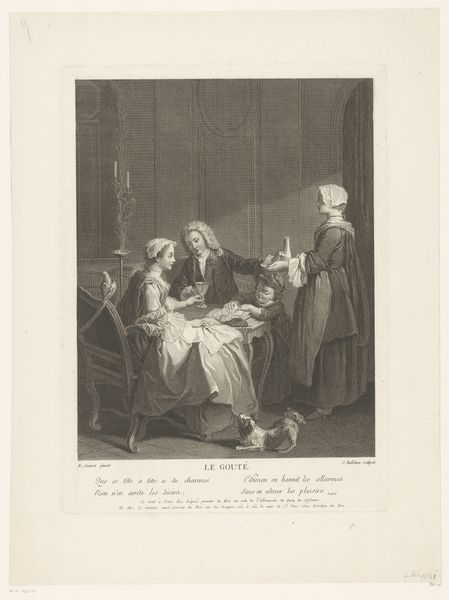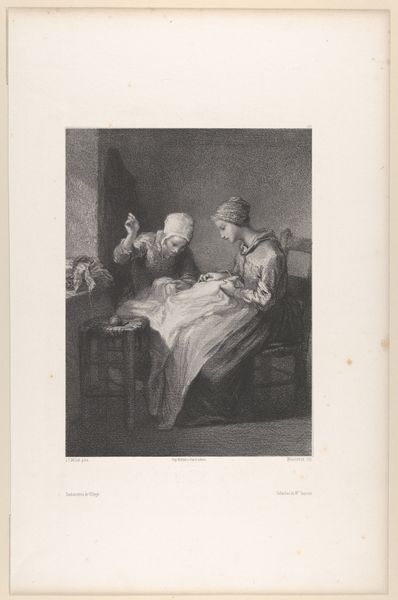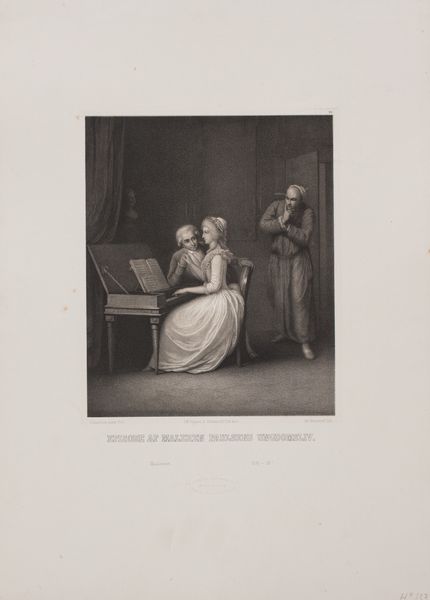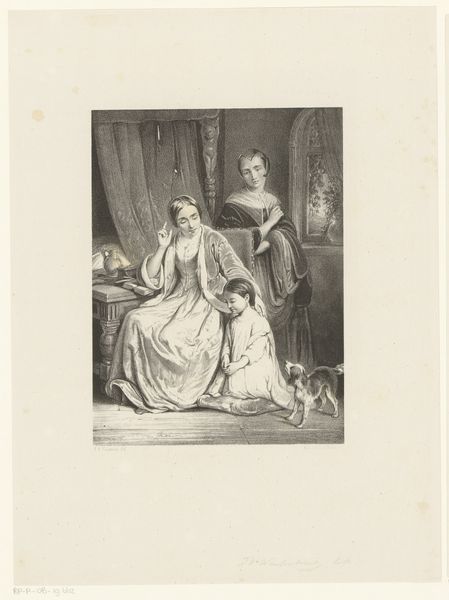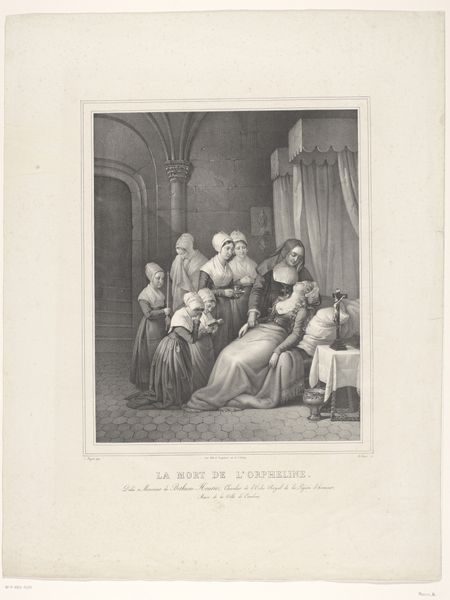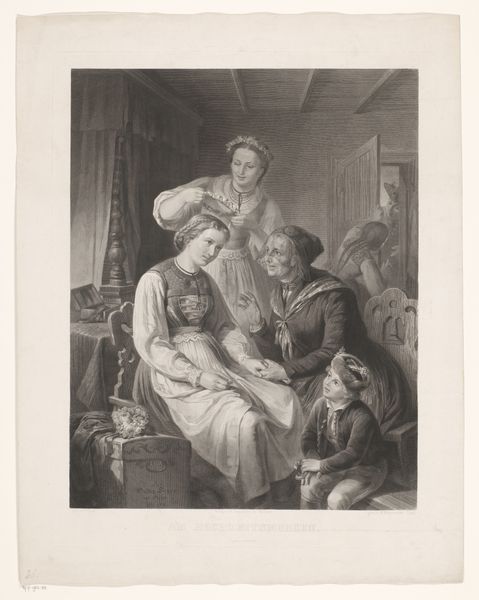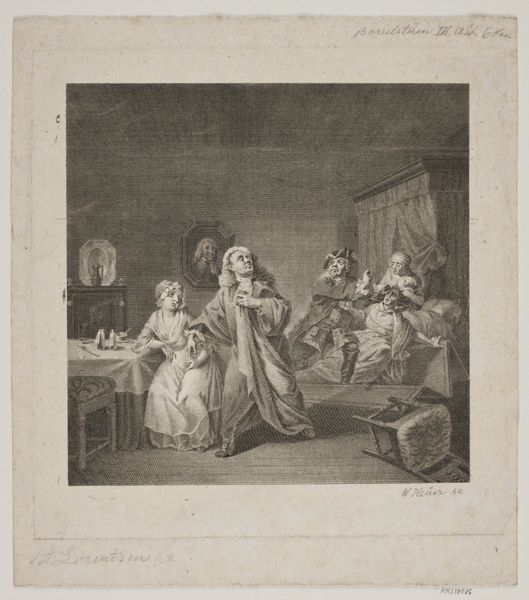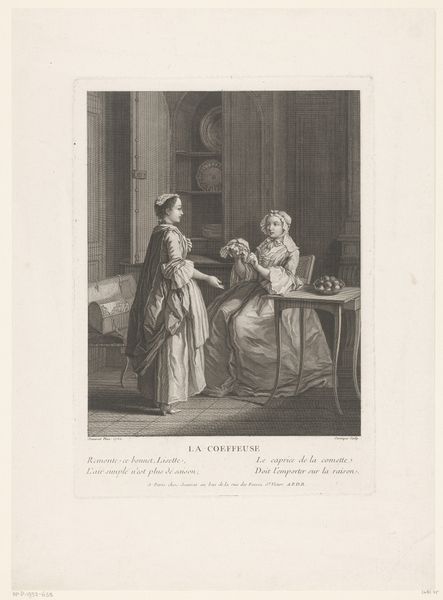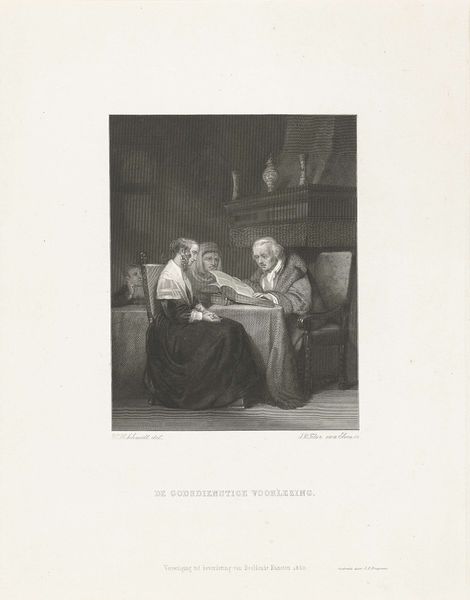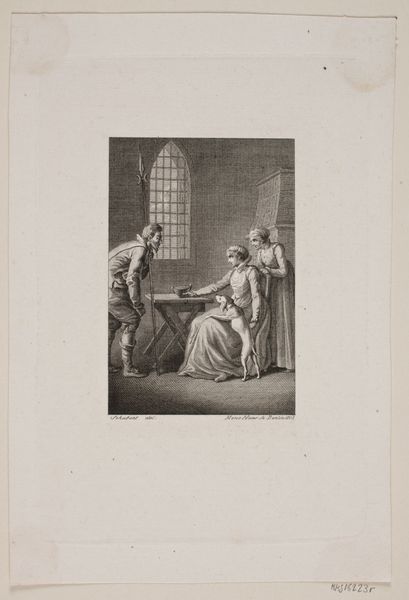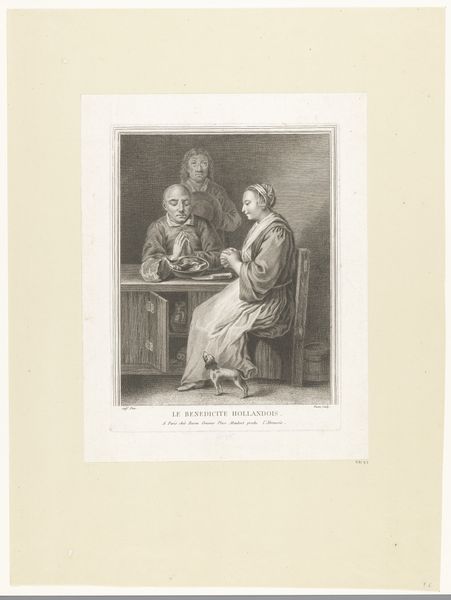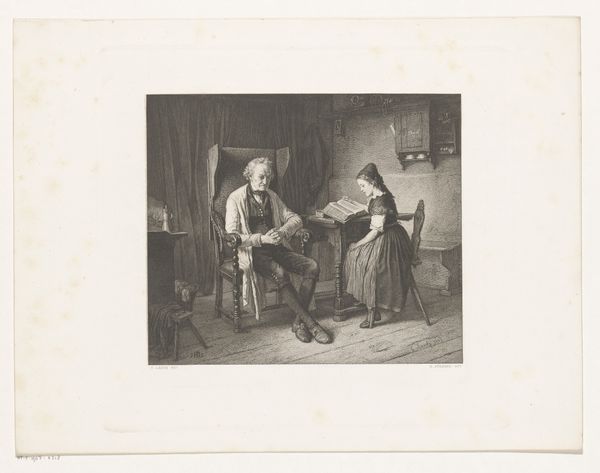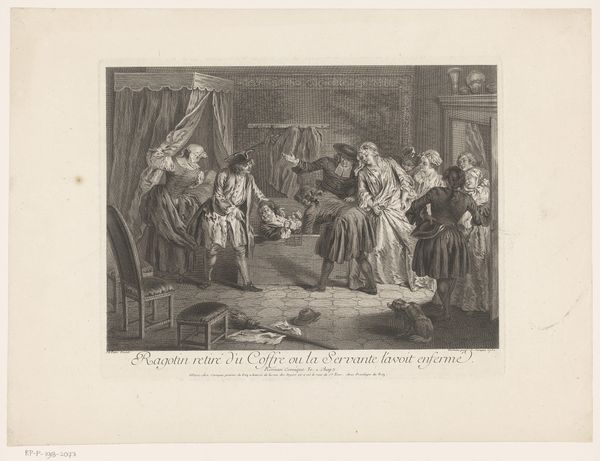
print, pencil, engraving
#
portrait
#
narrative-art
# print
#
figuration
#
pencil
#
line
#
genre-painting
#
academic-art
#
engraving
#
realism
Dimensions: height 289 mm, width 197 mm
Copyright: Rijks Museum: Open Domain
Editor: This is "Tafelgebed," or "Grace Before a Meal," by Jean-Denis Nargeot, from 1858. It looks to be a pencil engraving of a domestic scene. There's a mother, presumably, with two children seated at the table. It's so detailed! I'm struck by how the artist captures such an ordinary moment. How would you interpret this work? Curator: Focusing on its materiality, this print underscores the democratization of art in the 19th century. The mass-producible nature of engraving made such scenes accessible to a broader audience, embedding certain values related to family, labor and piety. Consider the economic forces at play. What does it tell us that this scene, seemingly intimate, was destined for wide circulation? Editor: That's a great point! I hadn't thought about the economics. I guess I was stuck on the "grace" part. Were these prints affordable for working-class families as well, or were they aimed at a middle-class audience? Curator: That's precisely the right question. While even mass-produced images still carried a cost, their existence challenges a simple high art/low art division. The print's materiality forces us to confront not just the image itself, but the conditions of its making and consumption. Also notice that engraving demanded a very different type of labor than painting. Editor: Right. It is painstaking. What can you learn from the line work itself? Curator: Observe how the cross-hatching creates a tonal range simulating light and shadow. These marks weren't spontaneous or individual; rather, these marks showcase disciplined craftsmanship, a skilled worker translating painting to the printmaking media. The artist translated a luxury item (painting) into a consumer good using manual, mechanical labor. Editor: I see what you mean! By considering the materials and production, we learn much more about the piece's role in society and not only focus on art. Thank you for sharing! Curator: Indeed. And that's a great benefit to adopting a materialist perspective on visual art!
Comments
No comments
Be the first to comment and join the conversation on the ultimate creative platform.
